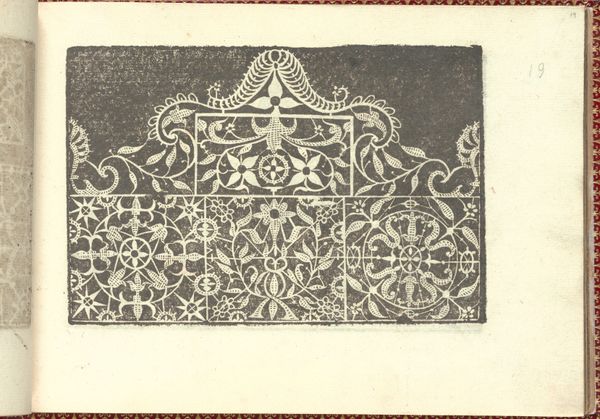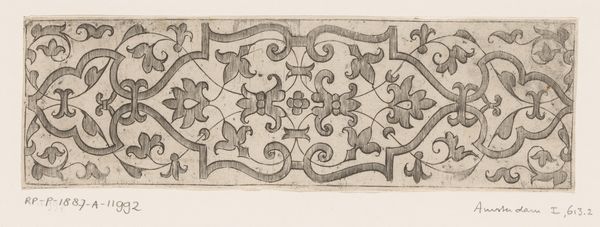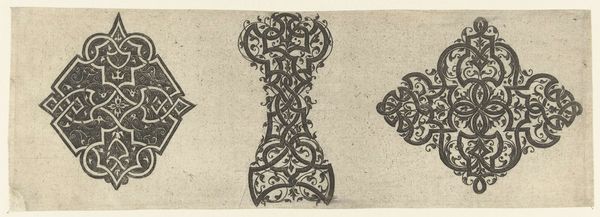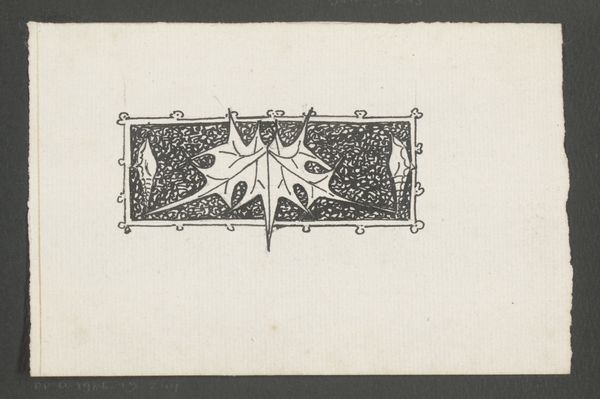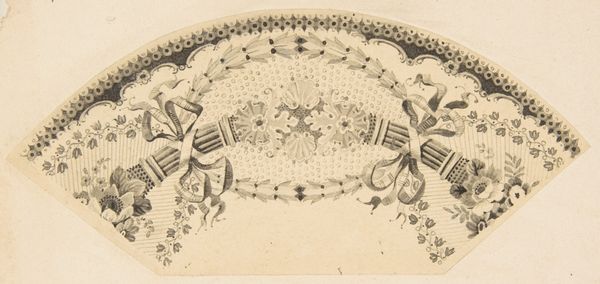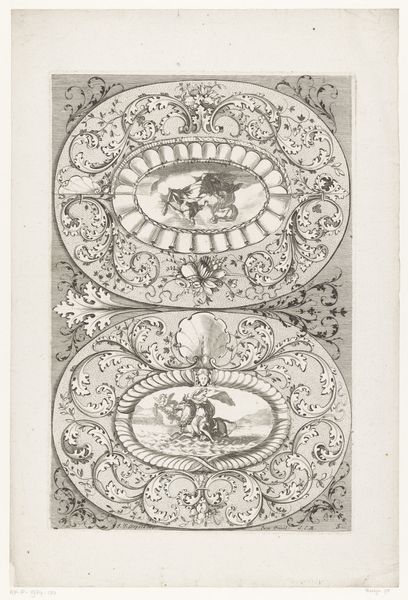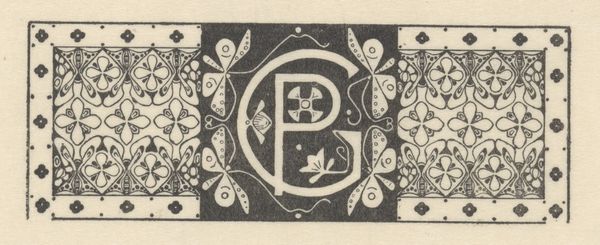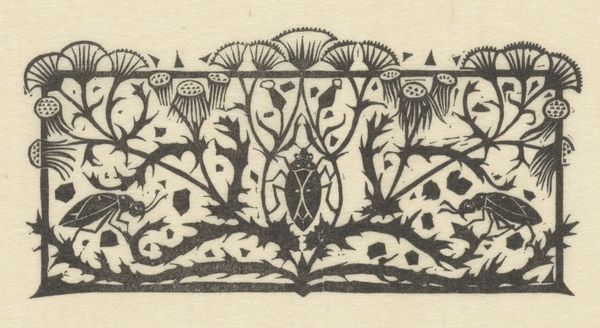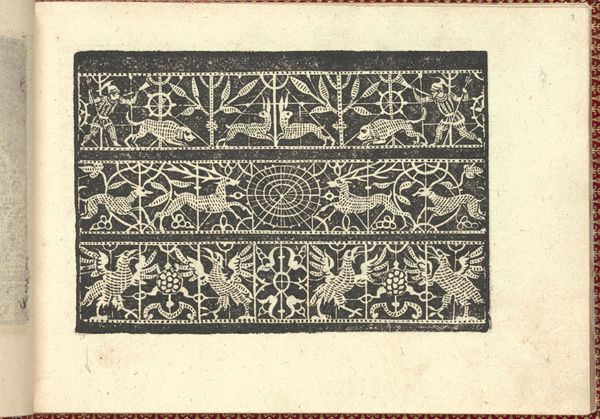
graphic-art, print, woodcut
#
graphic-art
#
art-nouveau
# print
#
geometric
#
woodcut
#
line
#
symbolism
#
decorative-art
Dimensions: height 67 mm, width 123 mm
Copyright: Rijks Museum: Open Domain
Curator: Good morning. We are standing before "Titelhoofd met palingen", or "Title Page with Eels," a compelling woodcut crafted in 1893 by Gerrit Willem Dijsselhof. The piece resides here at the Rijksmuseum. Editor: Striking. It's almost hypnotic with the interwoven eels. A dense composition with a bold contrast. The texture is captivating, isn't it? You can almost feel the grain of the wood. Curator: Indeed. Dijsselhof was a prominent figure in the Dutch Art Nouveau movement. We observe this stylization in the rhythmic lines and the almost geometric arrangement of natural forms—namely the eels themselves. Editor: I am curious to what extent symbolism intertwines here, with the obvious reference to those sleek, somewhat sinister creatures. What meaning might those meandering eels hold in a socio-cultural context, reflecting on contemporary society at that time? Curator: Symbolism was central to the artistic currents of that era. Eels, often seen as ambiguous creatures residing between water and earth, might symbolize transformation or hidden knowledge. It reflects a time captivated by the cryptic narratives found within nature. The background reminds one of a starry cosmos. Editor: A cosmological perspective enhances the narrative. I'm struck how this small graphic artwork captures the essence of the period with its attention to lines, shapes, textures, and tones—all playing together. The repetitive stars act as an energetic setting to showcase this life in water. Curator: And the decorative function shouldn’t be dismissed. These were designed to be integrated into books, posters, enhancing the appeal to larger public consumption and engagement. Art served function, carrying the public aesthetic. Editor: Precisely. An attempt to elevate daily experiences through artistic design. I think seeing it in this setting enhances its status. Curator: In isolation, it is not merely a relic but speaks to our time by reflecting the constant drive of aesthetic betterment of societal artifacts. It becomes a part of an ongoing dialogue, no? Editor: Certainly! Examining this artwork has only amplified how history can reshape contemporary discussions on art's importance within the ever-evolving narrative of art. Curator: A stimulating conversation indeed. Thanks.
Comments
No comments
Be the first to comment and join the conversation on the ultimate creative platform.


